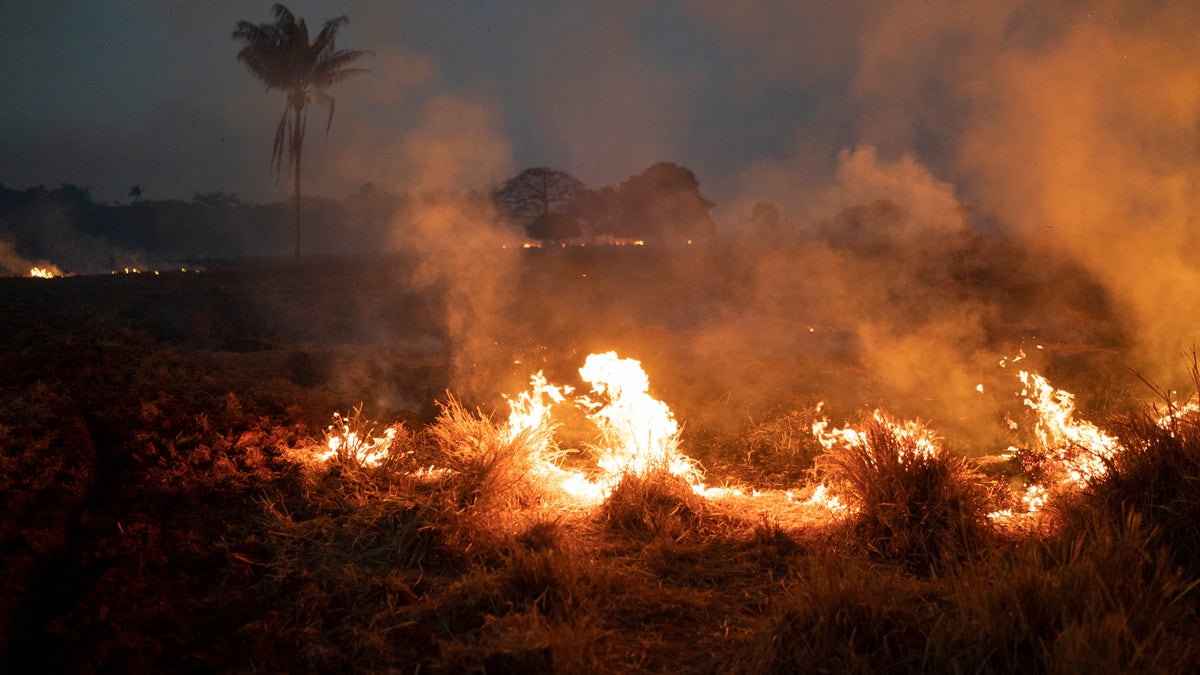Fox News Flash top headlines for June 6
Fox News Flash top headlines are here. Check out what's clicking on Foxnews.com.
The worldwide destruction of tropical forests increased last year, according to a recent study.
Data recorded by the environmental research group World Resources Institute and the University of Maryland revealed the global loss of old-growth, or primary, tropical forest -- 9.3 million acres, an area nearly the size of Switzerland -- was about three percent higher than in 2018 and the third-largest loss since 2002.
That would mean an area the size of a soccer field was lost every six seconds during the course of the year.
SEA LEVEL RISE COULD WIPE OUT MANGROVE FORESTS BY 2050, STUDY SAYS
In addition, researchers estimated that the loss of primary tropical forest resulted in the release of more than two billion tons of carbon dioxide -- more than the combined emissions from all on-road vehicles in the U.S. in a typical year.
Since 2000, the world has lost about 10 percent of its tropical tree cover.
Only 2016 and 2017 were markedly worse, when heat and drought led to record fires and deforestation, especially in Brazil.

A fire burns a field on a farm in the Nova Santa Helena municipality, in the state of Mato Grosso, Brazil, Friday, Aug. 23, 2019. Under increasing international pressure to contain fires sweeping parts of the Amazon, Brazilian President Jair Bolsonaro on Friday authorized use of the military to battle the massive blazes. (AP Photo/Leo Correa)
Once again, the South American country led the world in deforestation. Brazil was responsible for more than one-third of the total reported figure. Under President Jair Bolsonaro's anti-environmental policies, deforestation of the Amazon through clear-cutting appears to be on the rise.
In August 2019, Bolsonaro also drew widespread condemnation from environmental groups and world leaders for massive fires. However, Mikaela Weisse, who leads the institute's Global Forest Watch program, told The New York Times that the blazes actually contributed relatively little to Brazil’s total primary forest loss of about 3.4 million acres. Only about one-fifth of fires burned in primary forest.
Instead, data received from the Brazilian government’s forest-monitoring programs and other projects exhibited an increase in the clear-cutting of primary forests for agriculture.
“Even though the overall primary forest trend is only a small increase, we think that deforestation is getting worse,” Weiss said.
“The level of forest loss we saw in 2019 is unacceptable,” Frances Seymour, a senior fellow with the Institute, said. “We seem to be going in the wrong direction.”
“There has been so much international effort and rhetoric around reducing deforestation, and companies and governments making all these commitments that they are going to reduce by half their tropical forest loss by 2020,” Weisse added. “The fact that it’s been so stubbornly persistent is what’s worrying to us.”
But, the forecast for 2020 is not any sunnier as the coronavirus pandemic is still rampant.

FILE - This Sept. 15, 2009 file photo shows a deforested area near Novo Progresso in Brazil's northern state of Para. Brazil's government says destruction of its Amazon rainforest has jumped by 28 percent. The sharp jump in deforestation came in the August 2012 through July 2013 period, the time when Brazil measures the annual destruction of the forest. (AP Photo/Andre Penner, File) (A2011)
"Restrictions on mobility and looming budget cuts as a result of the economic fallout from the global pandemic may hamper efforts to enforce anti-deforestation laws," Weisse said. “Bad actors will try to take advantage with more illegal logging, mining, clearing, and poaching.”
Other analyses of deforestation, however, have shown different results.
In May, two United Nations agencies, using data from each country, reported that deforestation worldwide averaged about 25 million acres a year since 2015.
There were also some encouraging signs that efforts to reduce deforestation had some results in 2019.
CLICK HERE FOR THE FOX NEWS APP
In Indonesia, primary forest loss declined for the third year in a row. Colombia saw a decline similar to their level of 2016, and both Ghana and Ivory Coast exhibited significant declines. Ghana’s total of about 14,000 acres was its lowest since 2014, while Ivory Coast had its lowest total since 2005, at 29,000 acres.
The New York Times contributed to this report.

